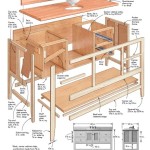How Much Is a Bathroom Fan Installation?
Installing a bathroom fan is a crucial home improvement project that significantly contributes to indoor air quality and overall home health. Bathroom fans help remove excess moisture, preventing mold and mildew growth, reducing unpleasant odors, and improving ventilation. Understanding the costs associated with bathroom fan installation is essential for homeowners looking to undertake this project. The total cost can vary widely depending on several factors, including the type of fan, the complexity of the installation, and geographical location.
Several elements contribute to the overall expense of a bathroom fan installation. These elements encompass the fan itself, the labor involved in its installation, any necessary electrical work, ductwork considerations, and potential modifications to the existing structure. By understanding each of these cost drivers, homeowners can make informed decisions and budget effectively for this important home improvement.
1. Cost of the Bathroom Fan Unit
The price of the bathroom fan itself is a primary factor influencing the overall installation cost. Bathroom fans come in a wide range of models, each offering different features, noise levels (measured in sones), and ventilation capacities (measured in cubic feet per minute or CFM). The appropriate CFM rating depends on the size of the bathroom; a general guideline suggests 1 CFM per square foot of bathroom space. For bathrooms with a toilet and shower/tub combination, increasing the CFM is recommended.
Basic bathroom fans, often the least expensive option, typically cost between $20 and $50. These fans usually offer standard ventilation and are suitable for smaller bathrooms or powder rooms. Mid-range fans, priced between $50 and $150, offer improved features such as quieter operation, humidity sensors, or integrated lights. High-end bathroom fans, ranging from $150 to $500 or more, may include advanced features like timers, motion sensors, built-in heaters, or Bluetooth speakers. These fans often boast superior performance, quieter operation, and enhanced energy efficiency.
When selecting a bathroom fan, it is essential to consider factors beyond the initial purchase price. Energy efficiency is a crucial consideration, as a more efficient fan can save money on electricity bills over its lifespan. Look for fans with the Energy Star rating, which indicates that they meet specific energy efficiency guidelines set by the U.S. Environmental Protection Agency. Noise level is another important factor, particularly for those sensitive to sound. Fans with a lower sone rating operate more quietly. The design and aesthetic of the fan should also complement the bathroom's overall decor.
The choice between a standard fan and a more advanced model will significantly impact the total installation cost. While a basic fan may be sufficient for some bathrooms, others may benefit from the added features and performance of a higher-end model. Homeowners should carefully evaluate their needs and preferences to determine the best option for their specific situation. Considering the long-term benefits of a more efficient and feature-rich fan can often justify the higher upfront cost.
2. Labor Costs for Installation
The labor cost associated with bathroom fan installation constitutes a significant portion of the overall expense. Hiring a qualified electrician or contractor is highly recommended, as the installation often involves electrical wiring and ductwork that require specialized skills and knowledge. Attempting to install a bathroom fan without proper expertise can be dangerous and may result in improper installation, electrical hazards, or damage to the home.
Electricians typically charge an hourly rate for their services. This rate can vary depending on their experience, location, and the complexity of the job. On average, electricians may charge between $50 and $100 per hour. The total labor cost will depend on the estimated time required to complete the installation. A simple replacement of an existing fan may take only a few hours, while a new installation requiring extensive ductwork and electrical wiring could take a full day or longer.
Several factors can influence the labor cost. The accessibility of the installation location plays a crucial role. If the bathroom is located on an upper floor or has limited access to the attic or crawl space, the installation may be more challenging and time-consuming, increasing the labor cost. The presence of existing wiring and ductwork can also affect the cost. If the existing infrastructure needs to be modified or replaced, it will add to the labor hours. The complexity of the electrical work, such as running new circuits or installing a dedicated breaker, will also impact the overall cost.
Obtaining multiple quotes from different electricians or contractors is advisable to ensure a competitive price. When comparing quotes, it is essential to consider not only the hourly rate but also the estimated time required to complete the job. Ask for a detailed breakdown of the costs, including the cost of materials and any potential additional charges. Checking the electrician's credentials, licenses, and insurance is crucial to ensure that they are qualified and reputable. Reading online reviews and asking for references can also provide valuable insights into their quality of work and customer service.
In some cases, homeowners may be tempted to hire a general handyman to save money on labor costs. While a handyman may be capable of performing some aspects of the installation, it is important to consider the potential risks. Electrical work should always be performed by a licensed electrician to ensure safety and compliance with local building codes. Improper wiring can lead to electrical fires or other hazards. Using a qualified electrician provides peace of mind and ensures that the installation is done correctly and safely.
3. Additional Costs and Considerations
In addition to the cost of the fan and labor, several other factors can contribute to the overall expense of a bathroom fan installation. These additional costs may include the cost of materials, ductwork modifications, electrical upgrades, and potential structural modifications.
Materials required for the installation can add to the overall cost. These materials may include wiring, connectors, ductwork, vent caps, and mounting hardware. The cost of these materials can vary depending on the type and quality. For instance, using insulated ductwork can improve energy efficiency and reduce noise, but it will be more expensive than standard ductwork. The need for longer duct runs will also increase the material cost. The electrician or contractor will typically include the cost of materials in their overall quote, but it is important to clarify this upfront to avoid any surprises.
Ductwork modifications are often necessary to ensure proper ventilation. If the existing ductwork is damaged, inadequate, or improperly routed, it may need to be repaired, replaced, or rerouted. This can involve running new ductwork through walls, ceilings, or floors, which can be a complex and time-consuming task. The cost of ductwork modifications will depend on the extent of the work required and the accessibility of the installation location. In some cases, it may be necessary to hire a HVAC professional to assess the ductwork and recommend the best course of action.
Electrical upgrades may be required if the existing electrical system is not adequate to support the new bathroom fan. This may involve running a new circuit to the bathroom, installing a dedicated breaker, or upgrading the wiring. The cost of electrical upgrades will depend on the complexity of the work and the distance between the electrical panel and the bathroom. In some cases, it may be necessary to upgrade the entire electrical panel to accommodate the additional load. A qualified electrician can assess the electrical system and determine the necessary upgrades.
Structural modifications may be necessary if the existing structure is not compatible with the new bathroom fan. This may involve cutting holes in the ceiling or walls to accommodate the fan and ductwork. In some cases, it may be necessary to reinforce the ceiling joists to support the weight of the fan. The cost of structural modifications will depend on the extent of the work required and the complexity of the structure. It is important to consult with a qualified contractor or structural engineer to ensure that the modifications are done safely and properly.
Permits may be required for bathroom fan installations, particularly if the installation involves electrical or structural work. Obtaining the necessary permits ensures that the installation complies with local building codes and regulations. The cost of permits can vary depending on the location and the scope of the work. Failing to obtain the necessary permits can result in fines or delays in the project. The electrician or contractor can typically assist with obtaining the necessary permits.
Disposal fees may apply for the removal and disposal of the old bathroom fan and any associated materials. Some municipalities charge fees for the disposal of construction debris, while others offer free recycling programs. The electrician or contractor will typically include the disposal fees in their overall quote, but it is important to clarify this upfront.
Unexpected issues can arise during the installation process, potentially adding to the overall cost. For example, hidden wiring, plumbing, or structural issues may be discovered during the installation. It is important to have a contingency plan in place to address any unexpected issues that may arise. Setting aside a small percentage of the budget for unforeseen expenses can help to avoid financial surprises.
The location of the home can also influence the overall cost of bathroom fan installation. Labor costs and material costs can vary significantly depending on the region. In areas with a higher cost of living, labor costs will typically be higher. Similarly, material costs may be higher in areas that are more remote or have limited access to supplies. Obtaining quotes from multiple electricians or contractors in the local area is essential to ensure a competitive price.
In conclusion, the cost of bathroom fan installation is influenced by a combination of factors, including the type of fan, labor costs, additional materials, potential modifications, and location. Properly assessing these factors allows homeowners to budget accurately and ensure a successful installation.

Average Cost To Install A Bathroom Fan Forbes Home

Bathroom Fan Installer Installation Facts

Bathroom Extractor Fan Costs Calculator Quotes For 2024

Broan Invent Series How To Install

How To Install A Bathroom Fan Diy Family Handyman

Exhaust Fan Installation Top Plumbing Services

Bathroom Exhaust Fan Installation Repair Replacement Services Captain Electric

How To Install A Bathroom Fan Homeserve Usa

Exhaust Fan Installation Services Everything You Need To Know Tle

Bathroom Exhaust Fan Replacement Maryland
Related Posts







